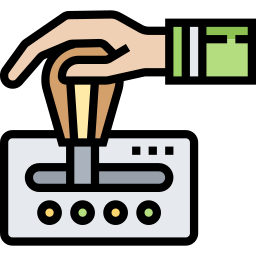Learning to drive a car is not all the time convenient, and sometimes it may seem like a good solution to select an automatic Honda E, if it’s for simple convenience or ease of use, this kind of transmission is becoming more and more known. Nevertheless, while they might seem like an excellent solution, there might also be complications with the automatic gearboxes of your Honda E . This is exactly the topic of our content page. First, we’ll quickly show you the different types of automatic gearboxes, then, in a second step, which complications you might face with the gearbox of your Honda E , and, finally, how to solve them.

The different sort of automatic gearbox of a Honda E
.
Gearboxes have the advantage of being known to be reliable, as you don’t need to use your clutch pedal and everything is electronically and mechanically handled there will be no early wear of your clutch or other elements that could be put to the test by misuse on your component.
Nevertheless, depending on the kind of automatic transmission your Honda E is equipped with you will have more or less reliability, we will introduce them to you now:
- Common automatic gearbox: It will use a torque converter, which will control the gear changes, it’s the oldest technology, it has evolved a lot in the last decades (more gears and a better management of the gear changes).
- Robotized automatic gearbox: This is a manual gearbox with a robotized system that will change the driver’s action. This kind of gearbox is less and less basic because they are thought to be very slow. We also quite often feel a coupling during deceleration.
- Dual-clutch automatic transmission: This is the ultimate automatic transmission, it functions on similar concept as the robotic transmission, but thanks to its dual clutch, you won’t have any more complications with slow speeds or elevated fuel consumption. They are often fitted on luxury models.
- Continuously variable automatic box: It is similar theory as on a scooter, a variator will come to control the differences between acceleration and motor speed, they are especially slow and tend to be unresponsive during the acceleration phases of your Honda E.
.
I’m having complications with the automatic transmission on my Honda E
We now begin the component that surely attracts you the most in this article, what are the complications you may come across with the automatic transmission of your Honda E? As explained earlier, generally speaking they are more reliable than manual transmissions, nevertheless, here are the main complications you may face:
- As described earlier, no matter what kind of automatic gearbox, they are quite often known to be slow and have inertia when accelerating. Nevertheless, this phenomenon is supposed to appear just when the vehicle is started, not when it is launched. If it feels like it happens constantly, the clutch or converter is most likely dead.
- I have the impression that a gear in the automatic transmission of my Honda E no longer shifts or jumps: If you have the impression that your gears no longer shift or tend to jump on your Honda E, there is a component that is undoubtedly responsible for this failure. In actual fact, the solenoid that works as a “switch” to engage the gears must not be working effectively, second option, a speed or engine unit speed sensor may be faulty and send the wrong information to your gearbox.
- If you feel drops originating from the automatic gearbox of your Honda E: If you feel a clutch when you go up or when you slow down, it is either your oil which is too old and which does not lubricate any more adequately all the mechanisms of your gearbox, or else a sensor which gives bad info
- My Honda E’s automatic transmission is leaking: At last, if your Honda E’s automatic transmission is leaking, it’s most likely one of your spy seals is too worn.
.
How do I fix automatic transmission complications on a Honda E?
And finally, we’re going to try to give you the strategies to fix the automatic transmission complications on your Honda E . Find them below:
- Oil leak on the automatic gearbox of a Honda E: Find the source of the leak, and change the concerned gasket, get it done by a professional, opening a gearbox is not easy. It will cost you a few hundred euros, especially for the labour. Do not think twice to read our content page on gearbox oil leaks on Honda E.
- Sensor issue: No matter which sensor is concerned, a replacement is the just solution, sensors do not repair themselves, you should count from 100 to a few hundred euros dependent on the difficulty of access to the one that worries you.
- Couplings: If you have complications with the couplings on your Honda E, you will only need to do a whole gearbox replace to gain comfort and preserve your gears.
- The automatic gearbox of my Honda E slips: In this case, you certainly have a dead clutch disc, you will have to replace the clutch, and on some models you won’t be able to replace it without doing a standard exchange of the gearbox, be prepared to spend more than a thousand euros.
There are other automatic transmission complications on Honda E, such as electronic problems or pressure complications, but this list lists the main ones, in any case, for such complex mechanisms. Once you feel a problem on this level, we advise you to go quickly to your mechanic.
If perhaps you have any additional questions about the Honda E, do not hesitate to consult our Honda E category.

